'One That Got away' Celica + P76 V8 balancing + Above & Beyond Service - Morley's Workshop 420



|
Somehow he missed the Celica, but gets into bent eights and backfire fours
MORLEY'S WORKSHOP
A good buy or a good bye?
Aaaarghhh! Had one get away the other day. Because I work my own hours and don’t have a boss snooping around, looking over my shoulder from nine to five, I can keep a track of essential stuff (like cars and go-fast bits) as they come on to the market. That’s the essence of online shopping I reckon: Get in early and grab it fast. Let’s face it, the interweb has opened up a whole world of possibilities, but equally, it’s opened that same world up to a few billion extra buyers. So you’ve got to move quick or miss out. And the other day, I just wasn’t quick enough. I’ve been on the lookout for an RA40 Celica (don’t ask why, I just am, okay?). Anyway, a few hours before I was due to drive interstate and visit my dear old mum, an RA40 turned up on an online sales site. The price was right, the condition looked good and it was literally just around the corner from Ma’s house. Meant to be, right? Wrong. I collared the phone and rang the seller, only to be told I’d missed out by minutes. Bugger.
Naturally, I told the bloke that if the sale fell through (and ask an online seller how often that happens) to give me a bell and we’d talk. Never heard from him again. So, not only did the perfect car, in the perfect place squeak past me by minutes, it also attracted the only other serious RA40 buyer in the country. As I said: Bugger.
Generally speaking, I’m a bit luckier than that. Sometimes I don’t even know I need a particular car until it finds me (usually through some random, roundabout way). But when it does, if I’m cashed up, I don’t mess about. Oh, I know all about the theory of hanging the seller out to dry and making them sweat on the sale, tempting them to drop their price in desperation. But I’m over that crap. If the car is right and the price is reasonable, I’m all in. Which is not to say I never haggle, but if you’ve done your due diligence on what things are worth, the car is either priced right or it isn’t. And, frankly, I’d rather wonder if I’d paid maybe a hundred or two too much while I’m driving home in my new car, than going home without it and waiting to see if anybody outbids me in some kind of driveway Dutch auction.
My other tip is to carry cash and don’t be a smarty-pants just because you’re the buyer and he or she is the seller. Cash talks. Simple as that. Meanwhile, making the seller feel small while you strut around pointing out faults in the car aint going to get you a big discount any time soon. If the car isn’t what you were hoping for, there’s no point in berating the seller for misleading you (unless they’ve been sneaky about it). Just state your case, tell them it’s not for you, rack off and let them get back to their life. Don’t leave them hanging with a "I’ll get back to you" unless you really do intend to mull it over and call them back with your decision. If you ain’t buying it, say as much; they’ll understand.
HERE'S MY TIP:
Bureaucracy blues

Got talking to a bloke the other day who’d just bought an elderly JDM rocket for himself. In his excitement, he forgot to do a REVs check to see if it was stolen. He finally got round to it on the way home as he tanked up on the freeway. Guess what? Yep, the VIN number of his new dream-car triggered the alarm bells at REVS. Back at the seller’s place a robust discussion took place. The seller insisted it was kosher and had never been nicked. The REVS people said different. Finally, after a few days and many phone calls, it was all sorted it out with the authorities and the car was cleared to be registered. Turned out to be a clerical error. Typical. But kids, seriously, do these checks before handing over the cash.
LETTERS:
Balancing act

In the seventies I worked at Lynx Engineering in Croydon, along with a good mate Ivan Jones. Highly respected in the industry, Ivan was the workshop manager. We worked in the balancing section which was a great experience and we worked a lot on the early racers.
Prior to the release of the Leyland P76, the aluminium V8 motors needed to be balanced as a long motor. We got the job. The plugs were removed and the motor was mounted on the pedestals of the balancing machine. Then the fly wheel was hooked up by a fabricated drive-shaft to a Chevy V8 motor. We then fired up the Chev to get the P76 engine up to the necessary 800rpm to get the required readings to then balance the motor.
The workshop floor would be covered in Leyland V8 motors as these were done in batches. We really enjoyed our work and the workshop was a great place to work. I hope you find this information of interest and would be happy to offer any other details or stories for you.
Ron Luker,
Email
Wow, what a great yarn Ron. I take it that Lynx engineering must have had the contract from Leyland Australia to carry out this balancing work. Even then, it seems a bit odd that Leyland would out-source this critical type of work, but maybe management there was as aware of its own company’s shortcomings as the rest of us soon became. I can only imagine the scene of a workshop floor covered in dozens of alloy Leyland V8s. A ski-boat builder back in the day would be having an attack of the dribbles. You don’t have a photo do you?
What has me wondering, though, is the whole idea of having something big and vibrating driving something that you’re trying to balance. Didn’t the harmonics and vibes of the Chevy at 800rpm have some kind of effect on the balancing process? Not that I know a lot about this (clearly, some would say) but a smooth, vibration-free run up to speed with, say, an electric motor would make more sense than a burping, bucking V8 running maybe 100rpm over and above it’s normal idling speed. Or did the one-off drive-shaft that linked the two V8s absorb the harmonics and pulses (with, maybe a torque converter or something)? What am I missing here?
Meantime, if you’d made up your mind to use another car engine, then I’m not surprised that a Chevy small-block was the engine of choice for the heavy lifting. These things have, over the years, powered just about anything that can be powered, from lawn-mowers, motorbikes and even air-raid sirens. And the odd car or two. It strikes me, too, that the successor to the cast-iron Chev small-block, the aluminium LS V8 has gone on to replace the original as the same sort of jack of all trades.
These days, I’m seeing LS engines in drag boats, motorhomes, sports sedans and whatnot. My new ute actually has one and while I’m not convinced of its low-end grunt (especially when it’s hamstrung by a widely-spaced four-speed auto) you can’t argue with its efficiency or its ability to get steaming along once you have 3000rpm or so on the tacho. Only thing is, it took GM until 1995 to get the alloy LS1 to market, while Leyland had the 4.4-litre P76 motor in showrooms in 1973.
Chasing the chaser
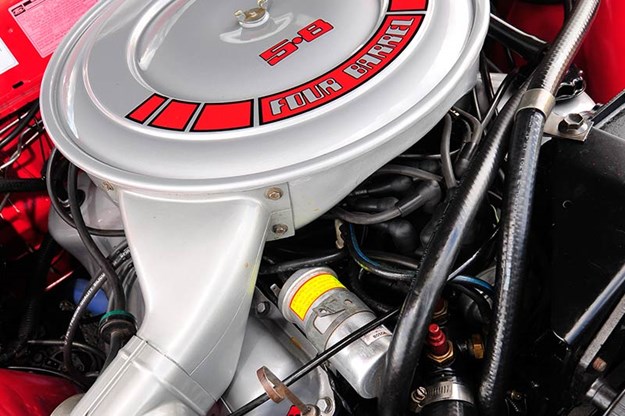
I have just restored my Ford XE ex-chaser and my verification papers state that it’s one of six in silver. It’s a factory 5.8 Cleveland, nine-inch, four-wheel-disc car with four-speed floor shift. I’m trying to find out if this was a special order car for maybe a commissioner or detective. Would you know how I could get some info on it? I just read your article in Unique Cars with the ex-Highway Patrol cars. Any info would be great.
Michael St James,
Email
Hi Michael. I rang my mate at Ford to check this stuff out, and it seems the whole deal is a bit more complicated than it seems. For a start, I can’t really find anything out without a VIN, so if you send me that, we can take this to the next level.
But beyond that, my man on the inside reckons that Ford Oz doesn’t offer a verification service. Which begs the next question: Who has issued the verification document you’re reading from. According to my mate, Ford has been keeping an eye on a bunch of operators who claim to be able to verify a particular car and then issue a certificate to that effect. Thing is, it’s not Ford doing it, and there’s a concern that the information may not be correct or complete. Also, Ford Oz is a bit antsy about a third-party company issuing documents on Ford letterhead. And fair enough.
So my next question is who issued the certificate you’re quoting from and who are they really? Was this a service you paid for? Did it claim to be a factory-backed verification service? Which is another way of saying, are you really sure your car is one of only six with that specification and silver paint?

The other thing that’s very difficult to ascertain 30-something years down the track is who wound up with the car. Ford’s records would probably show that it was built to a police specification, but once it was delivered to the rozzers, it would have been up to them to decide who got to drive it. From the spec sheet, though, it sounds very much like this would have been a Highway Patrol car. The Commissioner might have got it (if he was a petrol-head and knew it was coming) but it’s unlikely the force would have allowed the Ds or the Scientific Squad to get hold of what really was the last of the Interceptors.
There are wheels within wheels at work here, too: I once looked at an AU XR6 manual which had all the hallmarks of being an unmarked ex-cop car. Certainly it had all the right bits. But it turned out to be an ex-Justice Department car and was probably used to ferry the baddies in and out of court in a plain-brown wrapper with the ability to get the hell out of Dodge if the situation required it. Or maybe it was used as an unmarked wingman to shadow the prison van in case something kicked off. Maybe. Who knows? But it’s kind of fun to speculate.
Whatever happens, Michael, what you have is an exciting and significant part of Aussie motoring history and a hell of a car into the bargain. Look after it.
Bells and whistles press my buttons

Utterly useless accessories? For me, it’s beeping warning signals, the push-button starter, the electric hand-brake on new cars, and the way these all conspire with each other against the driver, in completely different ways depending on the make of car. For example, I had an AMG A45; get in, foot on the brake, press the button, put it in gear, press the sport mode (don’t get me started on what happens in normal mode) then simply work out where to store the key (scratch up the centre-console was usually my go to). At the destination just pull up, foot on brake, leave it in gear and press the stop button. No need to touch the electric hand-brake or the shifter, but of course if you did, you’d end up in neutral with the park-brake off, getting beeped at and having to start again.
Try the same sequence on my wife’s Hyundai Santa Fe (Yeah, yeah , I know) and I end up with a series of different beeps going off at me for different reasons. Then, even when I re-do what I’ve done wrong, and it’s in Park, with the hand-brake on, and the button in off mode, there’s nothing more I can possibly do and it should be happy. But it still beeps at me... presumably because I’m sitting in a Hyundai, or maybe because I’m within one metre of the garage wall.
Anyway that’s my gripe, but having said all this I seem to have much fonder memories of the car that I first encountered this nonsense in, albeit in analogue form. The grand-daddy of them all, an old 80s Volvo GL240 wagon I had many years ago. I bought the Volvo for towing the dinghy, taking the dog down the beach and being discreet, while I waited out a penalty for doing what you do in an S15 200SX. I remember reversing the Volvo down the boat ramp: Beep beep beep (driver’s door open so I could hang out the car and look backwards); na, na, na, na (dog in the front seat); ticker-tick ticker-tick (dog has no seat-belt on). That’s three audible warnings going off together with various warning lights flashing, and of course old dog barking at them all. Made me laugh out loud every time before LOL even existed. Maybe it’s an old versus new thing, but I miss that old car, and of course the old dog. Great mag by the way, keep up the good work.
Milo,
WA.
Ah yes, the magical, relaxing sound of warning buzzers. I remember when the Japanese car-makers started putting them in every car for every kind of warning back in the 1980s. We all thought we’d have to cut the wires on the buzzer to avoid going mad. Maybe some people did. Kind of turned out, though, that you got so used to it, you kind of started to ignore it. A bit like having your mother-in-law living in a granny-flat in the backyard.
The whole push-button start thing is a lot more vexing as it’s something you’re forced to physically deal with every time you enter or leave the car. What gets me is just how anti-intuitive some of these systems are. My pet hate is the electronic park-brake that requires you to push down on the button to apply the brake, and pull it up to release the damn thing: Exactly the opposite of what you’ve been doing for decades with conventional park-brakes. As the same kids who use LOL would say: WTF? I’m also always suspicious of keyless locking where you run a thumb along the door handle and the car locks. Again, decades of habit have taught me to check that the door is actually locked, but when you give the handle a tug to check, the bloody car unlocks, assuming you’re ready to go again having completed your business at the shops in the last three seconds.
But my absolute hate-its-guts set up was in FPV cars of a few years ago, when the decision was made to adopt a starter-button. And, yes, the big red button did look cool, but FPV didn’t bother to engineer the entire system. Which meant you still had to place the ignition key in the barrel and then hit the starter button. Again, this wouldn’t have been so bad if the barrel and button were within coo-ee of each other. But, of course, they weren’t; they were on opposite sides of the steering column, making starting the engine a two-handed job. Taking a one-handed task to a two-hander! How on earth is that progress?
Meantime, seems like the useless accessory debate has raised a few hackles. So keep them coming.
What a star
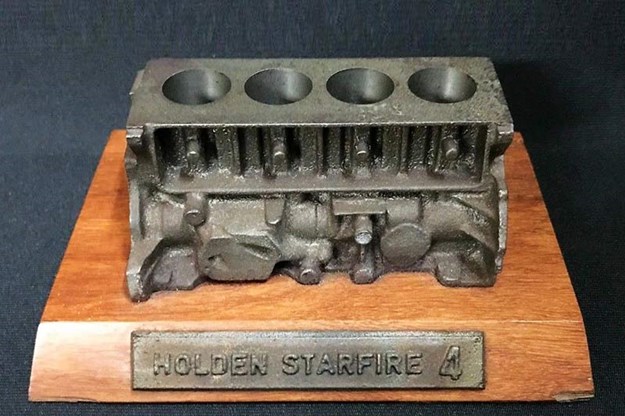
I worked at Repco Bearing Company in Launceston during the 70s and 80s as a maintenance fitter and strangely enough, the way you described the Starfire Four development was exactly what we did. For some GM development people we got a Holden six, a 173 I think, and cut two pots off with a power hacksaw, shortened side plates, tappet cover and sump. We made it look presentable with some filler and a coat of paint for a viewing by the suits, they nodded and took photos and left and we tossed it into the scrap bin. Obviously, a lot more R and D went into it and Repco manufactured the bearings for it. I checked my old dimension manual and the mains, con-rods and cam bearings are the same as the 173 as is the bore and stroke. The oil pump was also the same from memory as were the engine mounts. It was also fitted to the Toyota Corona as well as the Commodore, one of the first technology sharing examples by the big manufacturers.
So, get a 173 and slice two pots off and there you go, a Starfire Four....
David Hope,
Email
Wouldn’t be the first Starfire Four that got chucked in the nearest skip, David. Obviously, there was a bit more to the job of turning a six into a four (a crankshaft with different phasing, just for starters) but essentially she was a 173 with a couple of pots lopped off, just as you’ve described. I wonder why the GM brass wanted to see a mock-up of the engine before giving it the green light for development. And why was it the Repco Bearing Company that got the job of making the, clearly non-operational, dummy Starfire?

Anyway, history will record that they needn’t have bothered, because the thing was just a turkey from the start. Holden would have been much better off sharing the development cost of a new four-cylinder with Toyota. The new engine would have boosted local content for both brands and it needn’t have been an all-new design. A local revamp of Toyota’s existing 18RC unit (which did sterling service in the Corona and rear-drive Celica) springs to mind. Even without any modifications, the Toyota 18RC was making 75kW against the Starfire’s 58 piddling kiloWatts. It was also smoother, lasted longer and was vastly more reliable.
To this day, the Corona with the Starfire Four is the poor relation in Toyota circles and the less said about the four-cylinder Commodore the better. About the only good thing to come out of the whole, otherwise completely regrettable episode, was the Starfire con-rod which had to be stronger to cope with the four-cylinder harmonics and stresses. Those of us old blokes who still mess around with Holden sixes are very familiar with, and fond of, the Starfire con-rod.
Credit exchange

G’day Dave. As always enjoy reading your stuff… great fun. They say it’s nice to give credit where it’s due and I recently had a really nice thing happen that would reinforce this saying. I recently travelled to Frankston, Victoria to pick up a lovely clean original five-litre VR Calais with lovely low kays on it. It had actually been in the same family for the last 23 years and was much pampered.
Anyway my wife and I travelled home via the Newell Highway which I love driving. All was well until we got to West Wyalong where I started to get a flashing orange dash light to upset the day. We stopped there and spent the night after ringing the Holden dealer in Forbes as West Wyalong Holden had ceased to exist. The service manager said to bring the car in and he’d put the computer on it and see what the code/s meant.
We limped into Forbes and went to the Holden dealer and saw the service manager who took the car away and got it looked at in the service area. He came back and told me that their computers were too new and wouldn’t talk to the computer in my car. Damn. But he told me that the local NRMA-accredited mechanical service in Forbes would probably have the right gear and be able to sort me. Off we go and get there and sure enough they had the right gear and said it was the throttle position sensor that was the problem. After a couple of hours and a couple of false starts it was sorted.
The real nub of my story is this: The mechanic who got me on the road again was one of the most decent and helpful guys you could hope to meet. Not only did he fix the car but he had no morning-tea or lunch and didn’t stop till he’d got it right. The name of the business is Wayne Jones Automotive-Forbes and the bloke who looked after me is named Beau. Not sure if that’s how it’s spelt but there you are. For the princely sum of $150 and a quick $50 which I insisted he take it was all done.
It makes you realise that in this current world of me first, second and, if there’s any left over, me third, that there are some genuine people who care about others and are willing to go the extra mile. I think these guys deserve praise and other readers may like to jot the name down. Incidentally the Calais cruised home without a hitch to Brisbane where she is now going to be our fun car. She’s much loved already!
Simon, Bris-Vegas,
QLD
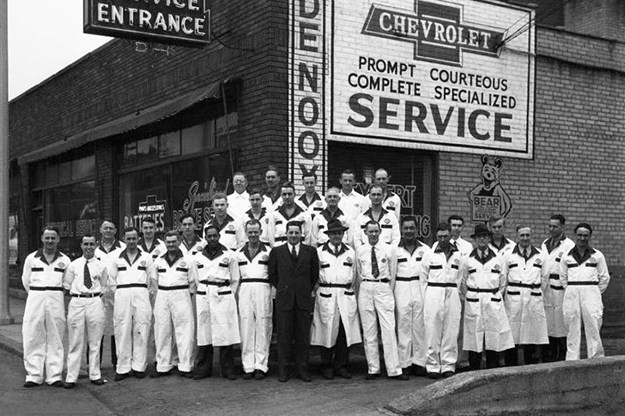
I love hearing stories like that Simon. Takes me back to the old days when I was driving my old man somewhere or other out in the middle of nowhere. Suddenly, there’s an increase in engine noise and my old Toyota, while still running fine, is making a terrible farting noise that gets louder when I put my foot down.
Because I knew pretty much every nut and bolt in that thing, I soon realised it was a loose exhaust manifold nut, so I pulled over, waited a few minutes for things to cool down, grabbed my socket set out of the boot and gave the offending nut a quick nip-up. At which point it sheered the stud clean off, hard up against the face of the head. Bugger.
We weren’t in any particular hurry (luckily) so I drove carefully to the next town (which I think was Burrumbuttock or Walbundrie or somewhere nearby) and rolled into the local fixit workshop just before knock-off time. The bloke – who’d probably heard me coming – swung the doors open and guided me into his fairly rustic old workshop before I’d even stopped out the front.
Dad and I went across the road to the pub for a frothy (just the one, you understand) by which time Old Mate at the workshop had managed to wrestle the old stud out, screw in a new one and bolted it all back together. And then charged me – I think – twenty-five bucks. And you know what, that repair lasted the rest of the time I had with that engine (it eventually got replaced by a Japanese-import twin-cam, but that’s another story altogether).
Anyway, thanks for sharing and if anybody else out there has got an example of a fixit or spare parts business going above and beyond, let’s have them. Maybe it’d be worth some kind of honour roll that we could all refer to when we needed help. Actually, that’s a great idea. I was once in a car club that listed geographically members who were willing to help out a fellow member stranded far from home. A list of towns, names and phone numbers was all it consisted of, but I imagine it helped out a lot of folks over the years.
TRIVIAL PURSUIT
Alloy, schmalloy
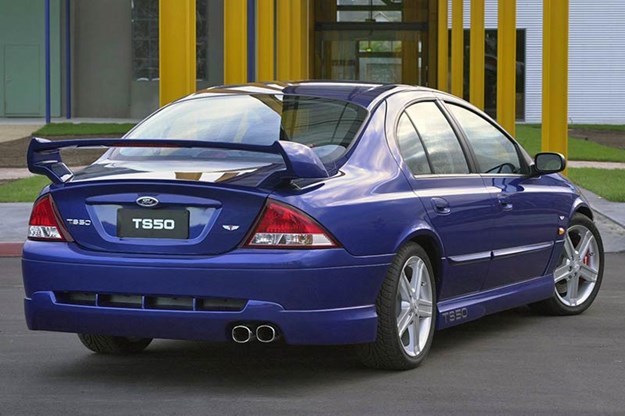
You might have heard me banging on about the 220kW version of the Ford Windsor V8 in the TS50 back around the turn of the century. These were a seriously sweet little V8 and one to collect if you’re that way inclined. But if you’re looking at a 220kW TS50 and it doesn’t have the alloy cylinder heads, don’t assume it’s a ringer. Ford only used the alloy heads as a stop-gap until a locally-modified cast-iron head was completed. And when it was, the engines switched to that. The later version is just as beaut… just a bit heavier.
I'll show you rare
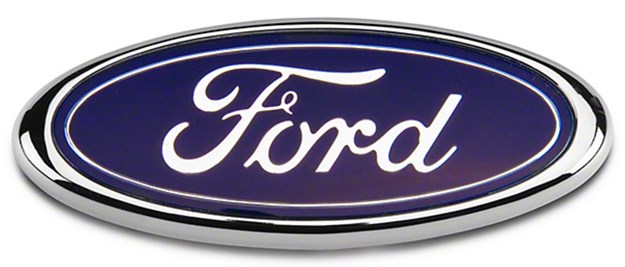
Speaking of special Henrys, here’s another one to jump on as a collectible should you ever stumble over one. Back in the days of Group E production-car racing, Ford made a small batch of EB Series 2 Falcons to homologate a few special bits and pieces. The six-cylinder engine got a revised exhaust, adjustable upper suspension arms at the front allowed for greater camber and castor tuning and the gearset from the V8 manual gave better durability and closer ratios. And how many did Ford make? Ten. And they reckon Phase 3s are thin on the ground!
Unique Cars magazine Value Guides
Sell your car for free right here
Get your monthly fix of news, reviews and stories on the greatest cars and minds in the automotive world.
Subscribe

.jpg)









.jpg)




